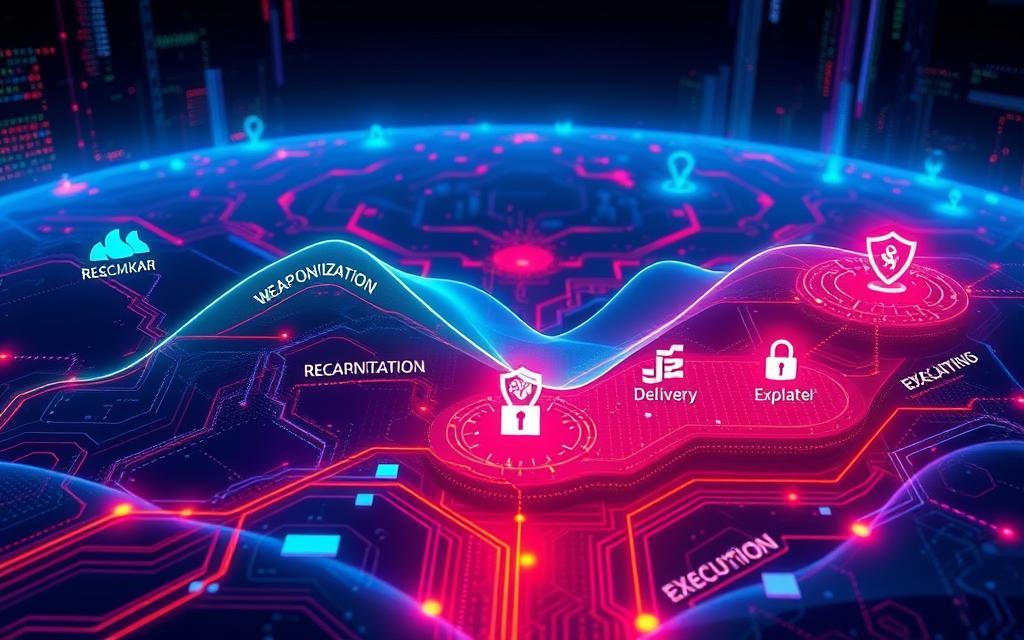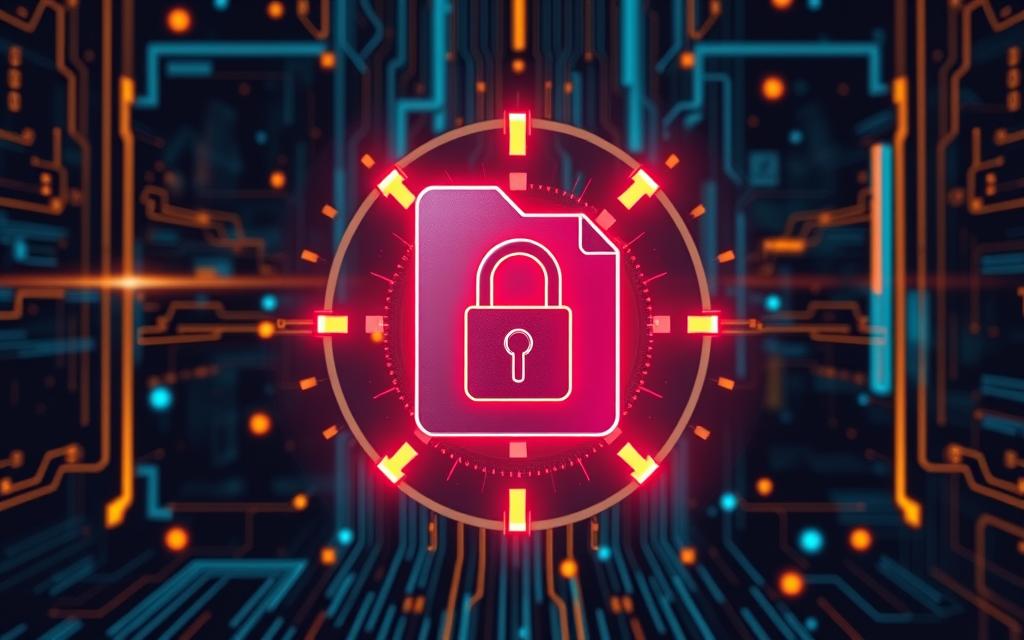Welcome to our informative guide on synthetic identity theft. In this article, we will delve into the definition of synthetic identity theft and provide you with a comprehensive understanding of this alarming form of fraud. Synthetic identity theft involves the creation of fictitious identities by combining real and fabricated information, which criminals then exploit for financial gain. By exploring the key characteristics and methods used by fraudsters, we aim to equip you with the knowledge needed to protect yourself and your organization from this growing threat. So, let’s begin our journey into the world of synthetic identity theft.
Table of Contents
ToggleUnderstanding Synthetic Identity Fraud

In this section, we will delve deeper into the mechanics of synthetic identity fraud, a growing concern in today’s digital world. Synthetic identity fraud refers to the creation of fictional identities by combining real and fictitious information, enabling fraudsters to bypass traditional identity verification processes.
One of the key methods used in synthetic identity fraud is the blending of real and false data, making it challenging for organizations to distinguish between legitimate and fraudulent identities. By using bits and pieces of genuine information, such as Social Security numbers and addresses, criminals construct synthetic identities that appear authentic.
The motivations behind synthetic identity theft are often financial. Fraudsters use these synthetic identities to apply for credit cards, loans, and other financial services, accruing debt that they never repaid. Because these synthetic identities have no prior credit history, they often start with a clean slate, making it easier to acquire credit.
Another factor that contributes to the success of synthetic identity fraud is the vulnerabilities in the current system. Traditional identity verification mechanisms often rely on the assumption that applicants are providing accurate information. Unfortunately, fraudsters take advantage of these weaknesses, exploiting loopholes to establish and maintain synthetic identities.
By understanding the mechanics, motivations, and vulnerabilities associated with synthetic identity fraud, individuals and organizations can take proactive measures to protect themselves against this growing threat.
Impacts of Synthetic Identity Theft
In the realm of identity theft, synthetic identity theft stands out as a particularly insidious and far-reaching problem, impacting both individuals and organizations alike. Let’s explore the various ways in which synthetic identity theft can wreak havoc:
-
Financial losses:
Synthetic identity theft can lead to significant financial losses for individuals whose identities are used as well as financial institutions. Fraudsters exploit these synthetic identities to open credit accounts, apply for loans, and make fraudulent transactions, leaving victims with overwhelming debts and damaged credit profiles.
-
Damaged credit profiles:
Victims of synthetic identity theft often suffer long-lasting damage to their credit profiles. As fraudsters misuse these synthetic identities to rack up debt and default on payments, victims’ credit scores can plummet, making it challenging to secure loans, mortgages, or even employment opportunities in the future.
-
Legal consequences:
Victims of synthetic identity theft may find themselves facing legal consequences due to the fraudulent activities committed under their stolen identity. This can result in legal disputes, difficulties proving their innocence, and the need to invest significant time and resources to rectify the situation.
-
Economic ramifications:
Synthetic identity theft also poses broader economic ramifications. Financial institutions and businesses bear the brunt of financial losses caused by fraudulent transactions and defaulted debts. This, in turn, can lead to higher interest rates, increased fees, and reduced access to credit for legitimate borrowers.
Overall, synthetic identity theft creates a ripple effect that extends well beyond the immediate victims. It undermines trust in financial systems, hampers economic growth, and imposes a heavy burden on individuals and organizations alike. Vigilance and proactive measures are crucial in combatting this pervasive form of identity theft.
Unraveling the Synthetic Identity Theft Scheme
In the realm of identity theft, synthetic identity theft has emerged as a complex and intricate scheme employed by fraudsters. Understanding the step-by-step process followed by these criminals is crucial for individuals and organizations seeking to protect themselves against this type of fraud.
The synthetic identity theft scheme begins with the creation of synthetic identities, which combine real and fictitious information to bypass traditional identity verification processes. This enables fraudsters to establish credit histories for these synthetic identities, often using false or manipulated data.
Once the credit histories are established, the next step for fraudsters is to manipulate credit reporting systems. They exploit the system’s vulnerabilities to ensure the synthetic identities are seen as legitimate and creditworthy. This may involve strategic reporting of financial transactions and maintaining a positive credit history for extended periods.
By unraveling the synthetic identity theft scheme, individuals and organizations can become more aware of the methods employed by fraudsters and implement stronger protective measures. Awareness of the creation process helps individuals spot red flags, such as discrepancies between personal information and credit history. Organizations can enhance their identity verification processes, ensuring robust verification mechanisms to detect and prevent synthetic identity theft.
Prevention Strategies for Synthetic Identity Theft
In order to mitigate the risk of synthetic identity theft, it is crucial for individuals and organizations to take proactive measures and implement robust prevention strategies. By following these best practices, you can significantly reduce the likelihood of falling victim to this type of fraud.
Safeguard Your Personal Information:
- Keep your personal information secure by using strong, unique passwords for your online accounts and regularly updating them.
- Be cautious when sharing personal information online, especially on social media platforms.
- Regularly monitor your financial accounts and credit reports for any suspicious activity.
Detect Red Flags:
- Be vigilant for warning signs that may indicate synthetic identity theft, such as unexpected credit denials or unfamiliar accounts appearing on your credit report.
- Review account statements and invoices carefully to ensure all charges are valid.
Strengthen Identity Verification Processes:
- Implement multi-factor authentication for your online accounts to add an extra layer of security.
- Verify the legitimacy of any requests for personal information before providing it.
- Use reputable identity verification services or software to verify the authenticity of customer information.
By diligently following these prevention strategies, you can greatly reduce the risk of falling victim to synthetic identity theft. Remember, prevention is key in safeguarding your identity and financial well-being.
Detecting Synthetic Identity Theft
In order to protect yourself and your organization from synthetic identity theft, it is crucial to be able to detect it early on. By being vigilant and aware of the signs and indicators, you can minimize the potential impact of this type of fraud. Here are some common patterns and behaviors associated with synthetic identity theft:
- Unusual or inconsistent personal information: Pay attention to discrepancies in the information provided, such as mismatched social security numbers, addresses, or employment details.
- Fraudulent credit applications: Look out for multiple credit applications from the same individual with different personal information. This could be a sign of synthetic identity theft.
- Suspicious credit behavior: Monitor credit reports for unexpected or unauthorized credit inquiries, new account openings, or sudden increases in credit limits.
- Unusual purchase patterns: Keep an eye out for abnormal spending habits or purchases that are out of character for the individual. This could indicate synthetic identity theft.
Fortunately, there are tools and technologies available that can aid in the early detection of synthetic identity theft. These include:
- Identity verification solutions: Utilize comprehensive identity verification systems that can help identify synthetic identities through advanced data analytics and fraud detection algorithms.
- Credit monitoring services: Enroll in credit monitoring services that can alert you to any suspicious activity or changes in your credit profile.
- Machine learning algorithms: Leverage the power of machine learning algorithms that can analyze large datasets to detect patterns and anomalies associated with synthetic identity theft.
By combining vigilance, awareness of red flags, and the use of advanced detection tools, individuals and organizations can increase their chances of detecting synthetic identity theft before it causes significant harm.
Synthetic Identity Theft Statistics
Understanding the prevalence and impact of synthetic identity theft is crucial in the fight against this sophisticated form of fraud. By examining the latest statistics and data, we can gain valuable insights into the scale of the problem and the industries most targeted by synthetic identity thieves.
Statistics Overview:
Here are some key statistics that shed light on the alarming growth of synthetic identity theft:
- According to recent studies, synthetic identity theft accounts for approximately 80-85% of all identity fraud cases.
- The number of synthetic identity theft incidents has been steadily rising, with an average annual growth rate of 20-25% over the past decade.
- Financial institutions, including banks and credit card companies, are the primary targets of synthetic identity theft, accounting for 60-65% of all reported cases.
- The healthcare sector is also increasingly becoming a target, with synthetic identity theft incidents rising by 30-35% each year.
Industries Most Targeted:
While synthetic identity theft can affect various sectors, certain industries are particularly vulnerable to this type of fraud. The following are the most targeted industries:
- Financial Services: Banks, credit card companies, and lenders face significant threats from synthetic identity thieves due to the availability of credit and banking products.
- Government Agencies: Fraudsters exploit the systems of government agencies to obtain false identification documents and access public benefits.
- Retail and E-commerce: Synthetic identities are often used to make fraudulent purchases online or obtain credit for personal gain.
- Healthcare: The healthcare sector is targeted for insurance fraud, prescription drug abuse, and unauthorized access to medical services.
These statistics highlight the widespread impact of synthetic identity theft and the urgent need for robust prevention and detection measures. By staying informed and implementing effective countermeasures, individuals and organizations can safeguard against this insidious form of fraud.
Conclusion
To ensure the safety and security of our identities, it is crucial to understand the threat of synthetic identity theft. Throughout this article, we have explored the concept of synthetic identity theft, its impacts, and detection strategies. By raising awareness and taking proactive measures, we can protect ourselves and our organizations from falling victim to this type of fraud.
Creating a strong defense against synthetic identity theft starts with safeguarding personal information. Implementing robust identity verification processes and staying informed about the latest fraud techniques are essential steps in preventing synthetic identity theft. By being vigilant and proactive, we can minimize our risk and keep our identities secure.
Furthermore, it is important to remain updated on the latest prevention strategies and technologies. Regularly monitoring credit reports, detecting red flags, and employing advanced identity verification solutions can go a long way in combating synthetic identity theft. By staying informed and leveraging available resources, we can stay one step ahead of fraudsters.
In conclusion, synthetic identity theft poses a significant threat in today’s digital world. However, by understanding the intricacies of this fraud scheme, implementing preventive measures, and staying informed, we can better protect ourselves and our organizations. Let us remain vigilant and take the necessary steps to safeguard our identities from the growing threat of synthetic identity theft.
FAQ
What is synthetic identity theft?
Synthetic identity theft is a type of fraud in which criminals create fictitious identities using a mix of real and fabricated information. These synthetic identities are then used to obtain credit, open bank accounts, and engage in other fraudulent activities.
How is synthetic identity fraud different from traditional identity theft?
Unlike traditional identity theft, where an individual’s existing identity is stolen, synthetic identity fraud involves the creation of entirely new identities. This makes it more challenging to detect and prevents victims from realizing their identities have been compromised.
What are the impacts of synthetic identity theft?
Synthetic identity theft can have severe consequences for both individuals and institutions. Victims may experience damaged credit profiles, face difficulties obtaining credit or loans, and be held liable for fraudulent debts. It also poses risks to financial institutions and the economy as a whole.
How does the synthetic identity theft scheme work?
The synthetic identity theft scheme typically involves several steps. Fraudsters create synthetic identities by combining real social security numbers with fake names, addresses, and other information. They then establish credit histories for these synthetic identities, often by applying for low-limit credit cards. Over time, they manipulate credit reporting systems to build up credit scores and obtain larger credit lines.
What are some strategies to prevent synthetic identity theft?
To prevent synthetic identity theft, individuals and organizations should be cautious about sharing personal information, regularly monitor credit reports for suspicious activity, and implement strong identity verification processes. Enhanced due diligence and the use of technologies such as biometrics can also help mitigate the risk.
How can synthetic identity theft be detected?
Detecting synthetic identity theft can be challenging, but there are some red flags to watch for. These include multiple individuals using the same address, inconsistencies in personal information, and unusual patterns of credit activity. Employing advanced analytics and tools that analyze data across multiple sources can also aid in early detection.
What are some synthetic identity theft statistics?
Synthetic identity theft is a growing concern globally. According to recent studies, it is estimated that synthetic identity fraud accounts for a significant portion of credit losses for financial institutions, with losses reaching billions of dollars annually. The exact statistics vary, but the problem is widespread and continues to evolve.
















